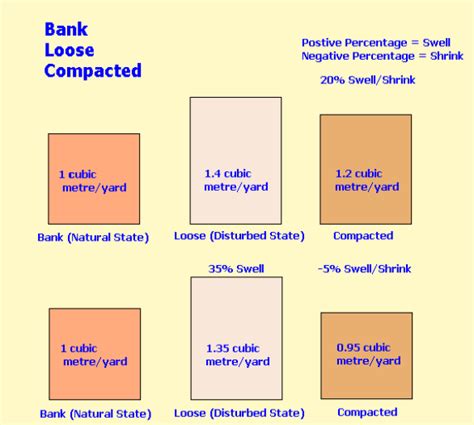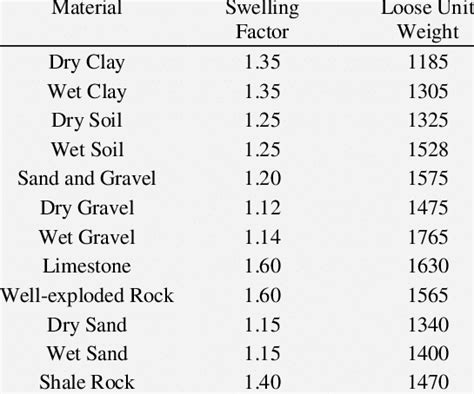excavation compaction factor Find the percentage of volume increase of excavated or mined materials due to . In this video, I added a new hydraulic thumb to the mini excavator. Because i can't get the thumb on the bucket to work. so I have to look up the manual and .
0 · Swell and Shrinkage of Excavated Materials List
1 · Swell Factors for Various Soils
2 · Spike's Compaction Factor Calculator
3 · Soil compaction
4 · Soil and Rock
5 · Material Density Tables To Help Estimate Earthwork Volumes
6 · Inaccurate Bulking and Compaction Factors
7 · Improved Shrinkage and Bulkage Factors for Cohesionless
8 · Compaction, Excavation and Earthwork
9 · CALCULATING VOLUMES AND WEIGHTS IN
10 · Bulking/Swell Factors for Various Excavated/Mined Materials
11 · 6 Ways to Reduce Soil Compaction
A powerful and compact towable backhoe with a 9.5 HP LCT motor, a 130-degree operating radius, and a 7-foot digging depth. Features a standard 9-inch bucket, a 4-gallon hydraulic system, and a 2-inch ball and towing mechanism.
Swell and Shrinkage of Excavated Materials List
Find the percentage of volume increase of excavated or mined materials due to . Learn how to calculate swell of various soils and materials based on their natural and excavated volumes. See a table of swell factors for clay, gravel, sand, rock and other .Find the density of soil in kg/m3 for different types of soil, such as clay, sand, gravel, and earth, in loose and bank conditions. Compare the load factors and volume calculations for excavation .
Learn how soil or rock from the borrow expands when dropped on the lorry or the landfill - or stockpiled. Find bulking or swell factors for various materials, such as clay, sand, .
Learn how to calculate the volume and weight of moist and dry granular materials using bulking factor and bulk density. Find tables of typical values for different types of soils, rocks, and .
Excavation increases the volume of material, so material from the borrow expands when dumped into the truck bin, into site, or stockpiled. Conversely, material typically shrinks under compaction.This manual includes guidelines for braced excavations, excavation stabilization, embankment compaction, underwater fills, cofferdams, uplift resistance, foundation waterproofing and lateral . Swell and shrinkage factors in construction can be used to estimate the volume of excavated material as in changes from in place to excavated and from in place to compacted .
the excavation, a theoretical shrinkage factor (SF) is defined as SF VV V E E = C − (1) where VE is the volume of the excavated soil and VC is the volume of the compacted soil. The shrinkage .
Excavation Calculators. Calculate the factor for converting compacted yardage to loose yardage needed.Find the percentage of volume increase of excavated or mined materials due to voids added to them. Compare swell factors of different materials from various sources and learn how to calculate bank and loose volumes.
Learn how to calculate swell of various soils and materials based on their natural and excavated volumes. See a table of swell factors for clay, gravel, sand, rock and other engineering materials.Find the density of soil in kg/m3 for different types of soil, such as clay, sand, gravel, and earth, in loose and bank conditions. Compare the load factors and volume calculations for excavation and compaction. Learn how soil or rock from the borrow expands when dropped on the lorry or the landfill - or stockpiled. Find bulking or swell factors for various materials, such as clay, sand, gravel, and limestone.Learn how to calculate the volume and weight of moist and dry granular materials using bulking factor and bulk density. Find tables of typical values for different types of soils, rocks, and quarry products.
Excavation increases the volume of material, so material from the borrow expands when dumped into the truck bin, into site, or stockpiled. Conversely, material typically shrinks under compaction.This manual includes guidelines for braced excavations, excavation stabilization, embankment compaction, underwater fills, cofferdams, uplift resistance, foundation waterproofing and lateral load capacity on deep foundations.

Swell Factors for Various Soils
Swell and shrinkage factors in construction can be used to estimate the volume of excavated material as in changes from in place to excavated and from in place to compacted state. There are three terms associated with this: Bank volume (volume before excavation, material in .the excavation, a theoretical shrinkage factor (SF) is defined as SF VV V E E = C − (1) where VE is the volume of the excavated soil and VC is the volume of the compacted soil. The shrinkage factor can also be expressed in terms of the dry unit weight of the two states of soil as follows: ( ) SF d E d C =−1 γ γ (2)Excavation Calculators. Calculate the factor for converting compacted yardage to loose yardage needed.Find the percentage of volume increase of excavated or mined materials due to voids added to them. Compare swell factors of different materials from various sources and learn how to calculate bank and loose volumes.
Learn how to calculate swell of various soils and materials based on their natural and excavated volumes. See a table of swell factors for clay, gravel, sand, rock and other engineering materials.
Find the density of soil in kg/m3 for different types of soil, such as clay, sand, gravel, and earth, in loose and bank conditions. Compare the load factors and volume calculations for excavation and compaction. Learn how soil or rock from the borrow expands when dropped on the lorry or the landfill - or stockpiled. Find bulking or swell factors for various materials, such as clay, sand, gravel, and limestone.Learn how to calculate the volume and weight of moist and dry granular materials using bulking factor and bulk density. Find tables of typical values for different types of soils, rocks, and quarry products.Excavation increases the volume of material, so material from the borrow expands when dumped into the truck bin, into site, or stockpiled. Conversely, material typically shrinks under compaction.
This manual includes guidelines for braced excavations, excavation stabilization, embankment compaction, underwater fills, cofferdams, uplift resistance, foundation waterproofing and lateral load capacity on deep foundations.Swell and shrinkage factors in construction can be used to estimate the volume of excavated material as in changes from in place to excavated and from in place to compacted state. There are three terms associated with this: Bank volume (volume before excavation, material in .

Here’s the correct way to chain down your mini excavator. Check your chains for any damage like cracks or stretching before using them. This step keeps the chains working longer and more reliably.
excavation compaction factor|Inaccurate Bulking and Compaction Factors